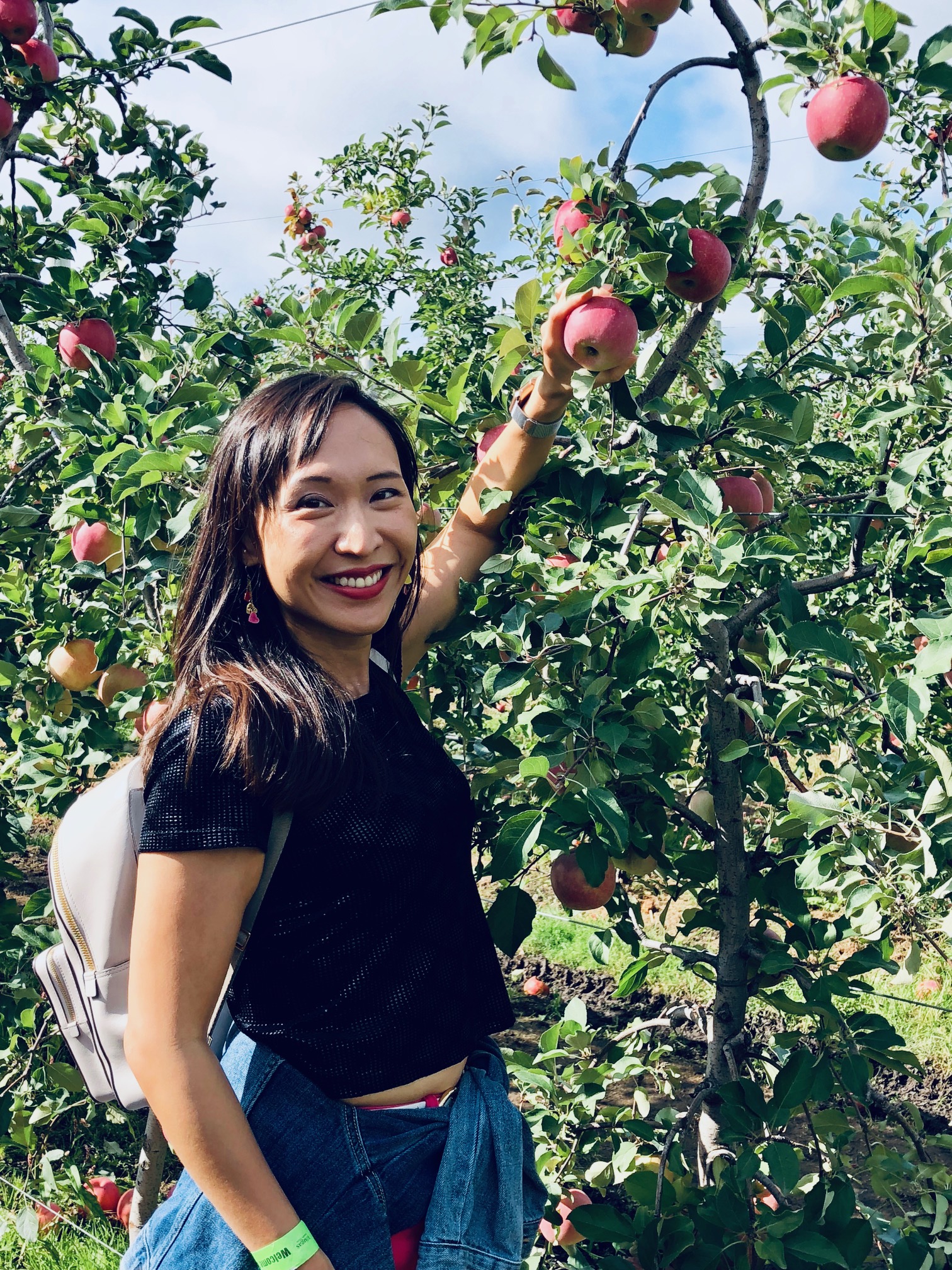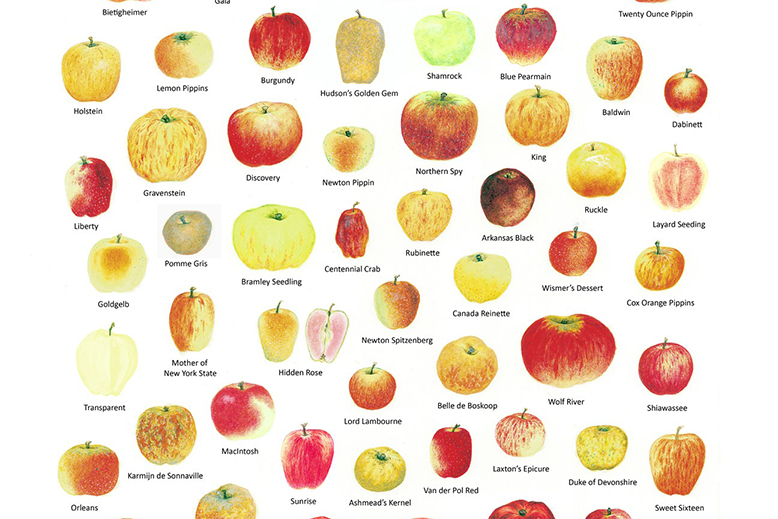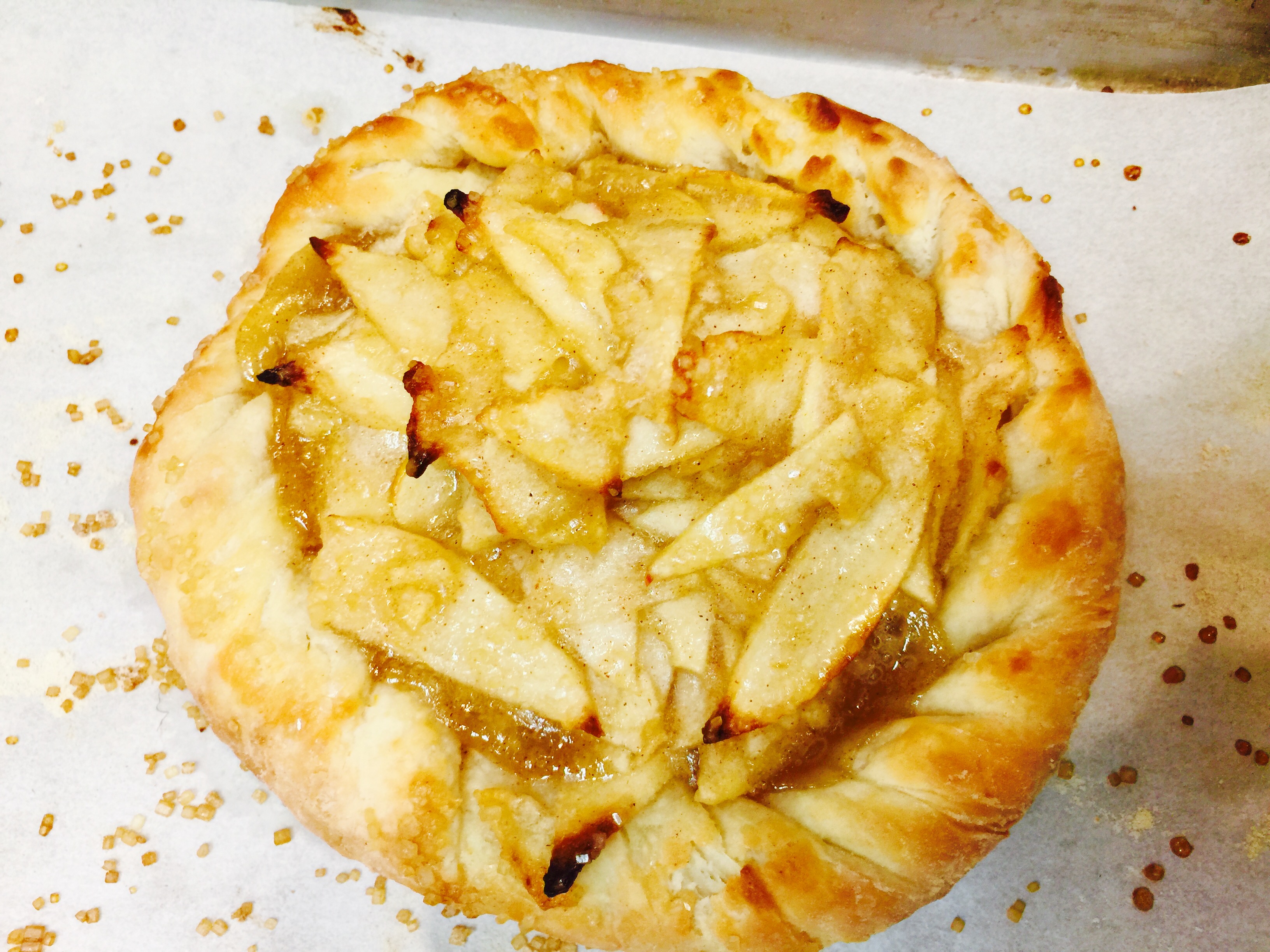How To Make a Luscious Apple Pie
If you follow my blog, you likely already know that I am very inspired by apple season this year. Have you gotten in any apple picking yet? If you have tons of apples sitting in your pantry (like I do), it's time to cook up those apples! If you're looking for a healthy apple treat, please check out my recent blog post DELICIOUS & HEALTHY KALE APPLE SMOOTHIE. On the flip side, if you want to go for a more indulgent treat, don't miss my apple pie recipe!
My most prominent apple pie-making memory is associated with my time working at Farmstead Table, a Farm-to-Table restaurant in Newton Center. Our rustic apple tart was always one of the best sellers since the day the restaurant opened. It was also the very first pastry I learned to make with Chef Sharon when I went there for a stage. "Stage" refers to working for a chef for free for one shift when you're looking for a kitchen job. It's a good opportunity for the prospective employee to check out the working environment and the supervisor to determine if the candidate will be a good fit. Even today, apple tarts and pies still have very special meaning to me.

Now, let me pass on all the skill set and knowledge I've learned about apple pies from Chef Sharon to you. Here are the top FAQs of how to make the most luscious apple pies:
Q1. Because apples contain a lot of water, when you bake apples at high temperatures, they release the juices and the pies can become soggy. Is there any way to prevent this from happening?
Yes! Of course! Chef Sharon taught me to make a roux to help solve this problem. Fortunately, roux is very easy to make. You just cook equal parts of butter and flour. Boom! The roux is ready. At Farmstead Table, we also squeeze fresh lemon juice and add it to the roux. The roux will absorb the juice released from apple so the pie crust will not be soggy. The fresh lemon juice provides some acidity to balance the richness of the pie dough. We often add some lemon zest to the pie fillings so the tartness will balance well with the sweetness of the apples.
Q2. There are so many kinds of apples. Does it matter what kind of apple I use?

Yes! I suggest you try as many kinds of apples as you can when you go apple picking. Bring a small pairing knife with you so you can cut off slices of an apple to sample them. I think it's such as waste to bite into one apple and then throw it away. Cooking and baking is all about balance. To create an interesting flavor profile, you want to balance sweetness and tartness. You definitely want some sweet options, such as Jonagold, Fuji or McIntosh. You also want small amount of tart options, as well, such as Granny Smith. You may not be able to find Granny Smith at your farm. If that's the case, just use the ones that taste more on the tart side to be the counterpart of the sweet ones. Or, you can always go to the local grocery store to supplement.
Q3. What's the secret to the perfect "flaky" pie dough?
Remember these four words: Cold Butter, Hot Oven. The most important thing to remember when making butter pie dough is to keep the butter cold. Butter has a low melting point which means that the heat from your fingers can soften or melt the butter, allowing it to blend with the flour during the mixing and rolling stages rather than remaining separate. If there is no separation, there are no flakes. Thus, it is best to keep the butter cold.
In fact, temperatures are crucial when it comes to making any perfect pastry. Samin Norat is a well-known chef who I very much admire. Her book "Salt, Fat, Acid, Heat" won the 2018 James Beard General Cookbook of the Year. This is how she empathize the importance of handing pastry in the correct temperature in this book.
"…flaky doughs break apart into flakes when you take a bite. Thank of classic American pies and French galettes, with crusts sturdy enough to hold up to a mile-high pile of apples or juicy summer fruits, but delicate enough to produce thin, uneven flakes when sliced. To create that strength, some of the fat is worked into the flour, and a minimal amount of gluten is developed. To achieve the signature flakes of a perfect pie or galette crust, the fat must be very cold so that some of it can remain in distinct pieces. Roll out a properly made pie dough and you will see the chunks of butter. When you slide the pie into a hot oven, the cold pieces of butter, entrapped air, and steam from the water released by the butter, all push apart the layers of dough to create flakes."
Q4. What kind of butter should I use for my pie dough?
When choosing butter, quality counts. Purchase a name brand unsalted butter, which is usually higher quality than the store's brand. I prefer European style butter, such as Kerrygold Irish butter. Avoid salted butter, which will make your crust too salty. Butter not only adds the best flavor possible to your pie crust, it also browns and crisps the crust better than other fats. Some people swear by using shortening in their crust because its high melting point means there is more time for the dough to set around the flakes of fat, ensuring a very flaky crust. In my opinion, proper technique with the butter dough will produce a flaky crust with a much better flavor.
Q5. What kind of flour should I use for my pie dough?
For the perfect pie dough, the two key attributes of flour are protein and water absorption. Protein, when combined with liquid (such as water in pie dough) and agitation (such as stirring, kneading and rolling) forms strands of gluten. In pie dough, you want just enough gluten in the dough to provide shape, flakiness and strength to your dough without making it tough.
Types of flour: Cake Flour has very low protein content and will not produce enough gluten to form sufficient structure. Bread flour, which contains a high level of protein, forms strong gluten strands too quickly to be of value in pie making as it produces dry, tough pie crusts. The most recommended flour for pie dough is unbleached all-purpose flour. It is easy to use and is readily available and it produces pie dough which is full of flavor.
Here is the recipe of Sharon's signature Apple Pie. Happy baking!

Sharon's Rustic Apple Pie
Ingredients
Pie Dough
- 3 C All purpose flour
- 12 oz cold butter
- 1 t salt
- 1 egg
- 1 t red wine vinegar
- 5 T water
Pie Filling
- Roux
- apples
- coarse sugar
- one lemon juice + zest
Instructions
To make the pie dough
- Place flour and salt in the bowl of a food processor or large mixing bowl. By pulsing or using a pastry blender, cut the butter into the flour until the butter is the size of small peas.
- Sprinkle ice water and wine vinegar, 1 tablespoon at a time, over the flour mixture.
- Pulse or stir mixture until large clumps form. When enough water has been added to allow the dough to hold together, transfer to a lightly floured work surface.
- Gather the dough together to form a ball. Flatten the dough into a disk about 6 inches wide, cover in plastic wrap, and refrigerate for 30 minutes before using.
To Complete Sharon's Apple Pie
- Preheat oven to 375F hi-fan.
- Roux is almost equal parts flour + butter, slightly excess of flour
- Pull out roux early in the day
- Pie dough 85 g each, roll out + chill
- About 1 apple per tart. Peel and chop thin slice for apple. Set aside.
- Scatter coarse sugar on table and roll chilled dough round into it until it's about 8" (20 cm) diameter. Roll the edges loosely into a crumpled tube — do not over pinch or flatten. It helps to keep the dough chilled so that it stands up.
- Put a few lumps of soft roux in a container and work it smooth with a spoon handle. Add lemon juice a few drops at a time until tasty.
- Add any remaining lemon juice to the fruit
- Add roux paste, sugar and cinnamon to coat the fruit.
- Spoon the fruit into prepared tart shell.
- Sprinkle coarse sugar on top. No egg wash needed.
- Bake 375F in oven until the pies are golden. Rotate the sheet pan once during last third of baking time.
- If there is a lot of juice that bubbled out, grander tarts to a clean pan with parchment paper.
Join Our Community at Patreon
Perks for Friends of Food Patrons only:
Friends of Food is a digital members-only community designed to empower and connect food folks alike.
- Invitation to private community & food folk directory
- Access to a highly vetted network of Chefs
- One hour Zoom cooking lesson once a month
- Cookbook club + happy hour once a month
- 30 mins cooking consultation
- E-mail us your cooking questions and we will get back to you with our best answer within a week.
- Shoutout
- Polls (Help us choose a topic for an upcoming video + more!)
- Behind-the-scenes / Bloopers
- Exclusive perks from brand partners

Melissa Lee
Chief Entertainment Officer
Melissa is 100% MIT (Made in Taiwan), where she worked as a food writer. She’s also worked alongside renowned chefs like Ming Tsai and Joanne Chang, honing her craft and gathering stories along the way. Part story-teller, part educator, and part food lover, Melissa brings a special blend of experience, skill, and enthusiasm to her work. She blends her Asian background, her new home of New England, and love of food and culture to bring joy, optimism, and inspiration to food lovers and fun-seekers everywhere.
What sparked your passion for the industry?
The desire to make things by hand. The joy of sharing delicious, hearty food with students. The opportunity for people to get connected via cooking and baking. When a child smiled broadly and told me it’s the best scone he has ever made and eaten, it really made my day!
In your opinion, what’s the most important course?
Well, I usually take a peek at the wine list first. I like tapas style, so the course doesn’t really matter. Cheese and charcuterie are always a good place to start. And since I’m a pastry chef, there is always room for dessert!
Bill Gates is picking up your tab, where would you go?
Noma, Copenhagen.

